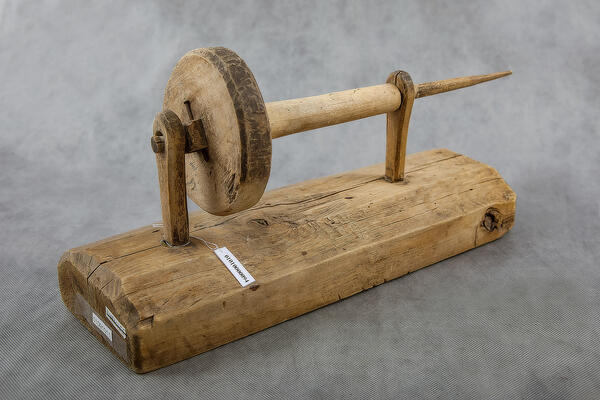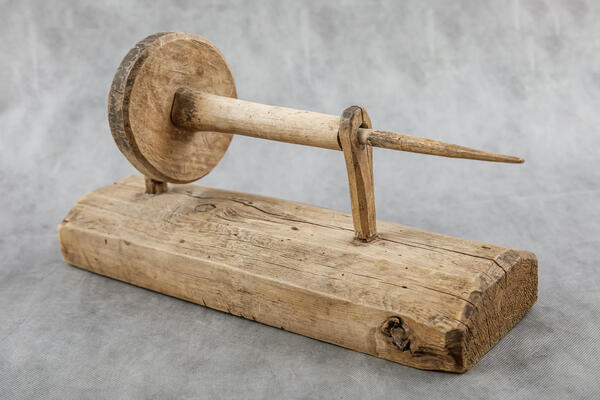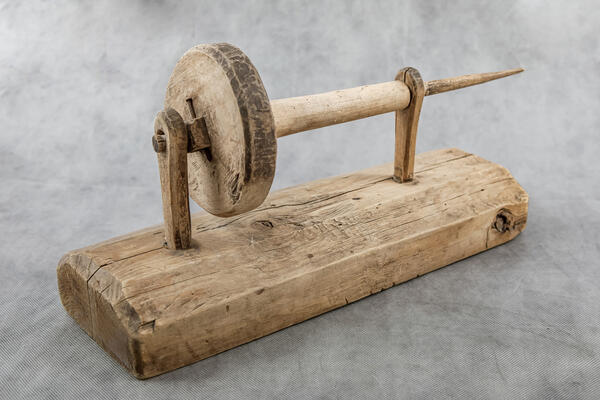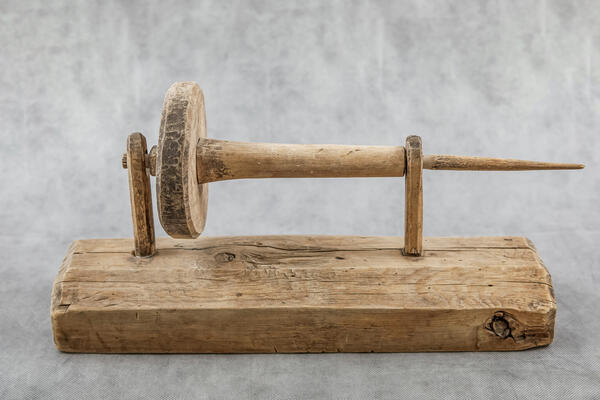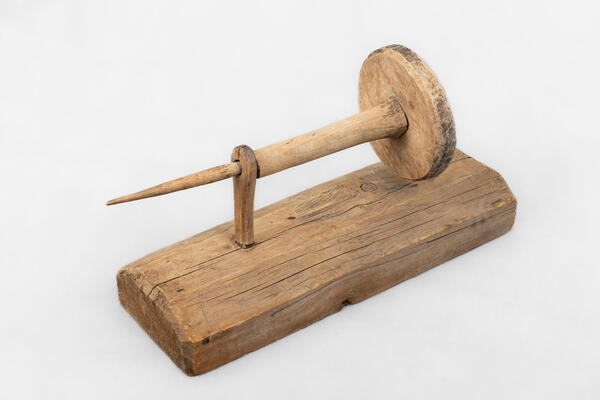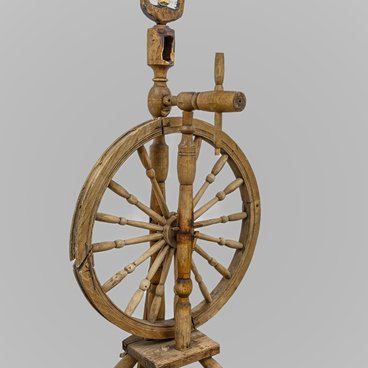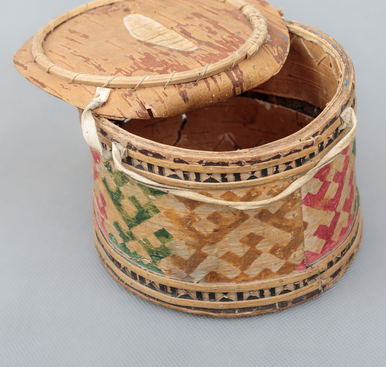Flax was of great importance for Siberians who used it to make fabrics. Doctor of Historical Sciences Elena Feodorovna Firsova noted in her work “Traditions of Processing Flax among the Eastern Slavs of the Upper Ob Region”: “In July, beautiful dark and light blue flax flowers bloomed and the plant ripened earlier than cereals.”
The process of preparing flax took a long time. First, as the researcher writes, it was “aged out” for several weeks, then tied into sheaves, crumpled and ruffled, combed, and only then used in spinning.
The collection of the Uray City Historical Museum includes several unique household items. One of them is a skalno — a yarn winding tool, which was used to make transverse weft intertwined with longitudinal warp ones. This exhibit was made in Western Siberia.
On the territory of Russia, the skalno has become widespread. In different regions, it had its own name. It was called “skalno” in the Vologda, Tobolsk, Omsk and Kaluga Governorates, “skalo”, “skalyshtsa” or “sukalo” — in the Yaroslavl Governorate, “skalnitsa” — in the Pereslavl-Zalessky district of the Yaroslavl Governorate, and “holobrod” or “korobrod” — in the Kostroma Governorate.
In the 1959 edition of “Economy and Life of Russian Peasants”, Afanasy Semyonovich Bezhkovich noted that this tool consisted of a horizontal bar, a board, and sometimes a box about half a meter long, two vertical racks, which were attached to the bar, board or box. The skalno was used to wind threads into a convenient form for later use in woven products.
Craftswomen turned the handle, the wheel turned, and through a rope transmission, the rotation was transmitted to the rod with a bobbin — a kind of spool for threads. This was also the way to process linen and cotton threads so that they became smooth and polished.
In addition, a skalno was used to twist several threads into one. Women would use this technique to connect threads of the same type, as well as different ones, for example, cotton threads with linen or wool. For convenience, during work, the balls of threads were placed in a box or basket, so that they “did not run” in the hut during the winding process.
The process of preparing flax took a long time. First, as the researcher writes, it was “aged out” for several weeks, then tied into sheaves, crumpled and ruffled, combed, and only then used in spinning.
The collection of the Uray City Historical Museum includes several unique household items. One of them is a skalno — a yarn winding tool, which was used to make transverse weft intertwined with longitudinal warp ones. This exhibit was made in Western Siberia.
On the territory of Russia, the skalno has become widespread. In different regions, it had its own name. It was called “skalno” in the Vologda, Tobolsk, Omsk and Kaluga Governorates, “skalo”, “skalyshtsa” or “sukalo” — in the Yaroslavl Governorate, “skalnitsa” — in the Pereslavl-Zalessky district of the Yaroslavl Governorate, and “holobrod” or “korobrod” — in the Kostroma Governorate.
In the 1959 edition of “Economy and Life of Russian Peasants”, Afanasy Semyonovich Bezhkovich noted that this tool consisted of a horizontal bar, a board, and sometimes a box about half a meter long, two vertical racks, which were attached to the bar, board or box. The skalno was used to wind threads into a convenient form for later use in woven products.
Craftswomen turned the handle, the wheel turned, and through a rope transmission, the rotation was transmitted to the rod with a bobbin — a kind of spool for threads. This was also the way to process linen and cotton threads so that they became smooth and polished.
In addition, a skalno was used to twist several threads into one. Women would use this technique to connect threads of the same type, as well as different ones, for example, cotton threads with linen or wool. For convenience, during work, the balls of threads were placed in a box or basket, so that they “did not run” in the hut during the winding process.

